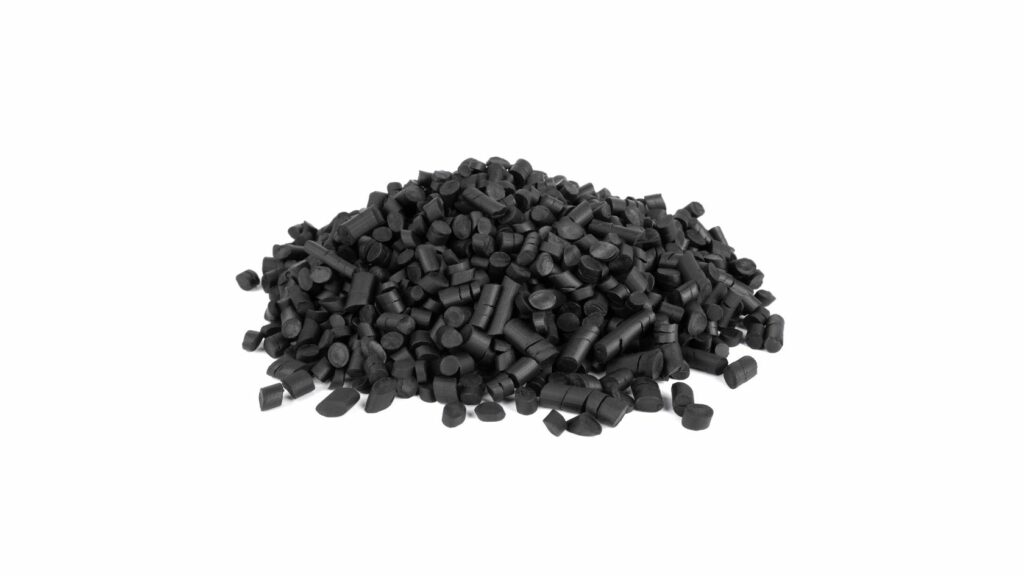
We all know that tires are made of rubber. Some people wonder, why are car tires made of rubber. The answer to this question is not specific to the type of vehicle so, cars, two-wheelers, or trucks do not matter.
Rubber is used to make tires for decades. The process of shaping the tires differed through the years but the material remained the same.
What makes rubber inseparable from tires? What are the factors considered to use rubber while making tires? Is rubber the only option to make tires?
Find the answers to these questions and many more in this post which is based on thoroughly researched facts, and some personal knowledge.
Why are car tires made of rubber?
Car tires or for that matter any automobile tires are made of rubber because of a combination of properties.
Rubber is the ideal material to offer the flexibility, grip, and durability that are required to perfect the shape of a tire.
Rubber performs really high when it comes to absorbing the bumps, and shocks of the road.
The components of rubber can resist heat and other weather conditions which is helpful in protecting the car’s vital parts such as the wheels and brakes from overheating.
Some of the other reasons that go in favor of rubber are its ability to manage friction levels, offer better traction control, make less noise, and provide better cushioning/comfort to the rims and wheels.
Eventually, modern car tires are not limited to just rubber but also include some parts of synthetic, nylon, silica, and many other chemicals to achieve better performance.
Let’s explore these components and qualities of rubber further!
Flexibility
Rubber is the sole material that remained standard in making tires. On the flip side, natural rubber is not capable of lasting too long.
Fluctuating temperatures and stressful road conditions make natural rubber wear out early. This is when tire companies (based on their research) started adding other chemicals to cover the shortcomings of rubber.
Synthetic rubber derived from petroleum chemicals was later discovered. Synthetic rubber was found to be offering additional advantages of greater resistance, and elasticity owing to its modifiable properties.

Synthetic rubber is further classified into different types such as Styrene Butadiene Rubber, Butadiene Rubber, Butyl Rubber, Ethylene Propylene-diene Rubber, etc. which is used according to the requirements of vehicle categories (cars, trucks, bicycle, airplanes, etc.)
When it comes to cars, Styrene Butadiene Rubber and Butadiene Rubber along with natural rubber are used to obtain better mileage, rolling and skid resistance capabilities, and longer durability.
Needless to say, you won’t find such qualities and efficiencies of rubber in other materials like steel, and wood which were used on vehicles in older days.
Deformation
The flexibility of rubber compounds has a very high ability to absorb shock loads. This compound which is a mixture of various other elements can deform itself back and forth regaining its shape.

Bumping on the roads is very common and when vehicles hit a hard bump it sends a shock to the entire wheel that can cause damage to the springs and the frame.
Thanks to the incredible deformation capability of rubber a car can easily absorb the impact of a bump and quickly regain its shape.
Grip
For proper grip, resistance, and traction rubber is further mixed with different types of oils and chemicals which are called fillers. Fillers include silica, carbon black, and chalk which binds the rubber together.
Proper binding helps a tire deform better under the weight/force resulting in a larger contact patch with the road. Enhanced patching improves the grip which is essential from a safety perspective.
The chemicals also play an important part in increasing the flexibility of tires making them more weather-proof. This means tires become slip-resistant during monsoon, remain soft in winter, and stand rock solid during summers.
Related read: Do tires need more air in hot weather?
Balanced friction
Because of the deformation and gripping compounds, rubber gets a balanced friction with the roads.
Add to that, rubber works on a tread pattern designed to disperse water away from the tire. In the absence of any moisture, the rubber compounds stick to the road efficiently.
The tread pattern is also instrumental in offering better cushioning that reduces the amount of vibration felt by the vehicle keeping it intact on the road.
Less noise
With controlled rolling resistance and a tread pattern designed to create balanced friction, a rubber tire does not make much noise while working.
Imagine the noise a wooden or steel tire would make. Rubber’s shock absorption capabilities come in handy here to control the sounds which make driving distraction-free.
Airtightness
One of the important reasons car tires are made of rubber is their ability to hold the air. This is just not possible with steel or wooden tires which means they are worth single use.
Tires have different types of tubes inside which are filled to keep the rubber inflated. The air pressure is also responsible to absorb shock waves.
With proper inflation, rubber tires can run longer and sustain on-road obstacles with ease. Air tightness also means that you can use the same tire again and again with balanced air pressure.
Durability
Rubber tires are more durable due to their excellent resistance ability which keeps wear and tear far away.
Apart from the natural and synthetic rubber additional additives, oils, and chemicals are filled in tires to withstand the shock waves, crumbles, and damage during the run.
Vulcanization is another process adopted by tire manufacturers to make tires work longer. Under this process, tire material is heated to create elastic rubber which makes them less brittle and more resistant to cracking and tearing.
Longer durability also improves the mileage of a vehicle as tires are able to survive all the loads and challenges arising on the road.
It is because of rubber that you can run your vehicle thousands of miles uninterrupted with proper maintenance.
Final thoughts
As of now, you won’t get a better alternative than rubber to make tires. Rubber is the most flexible and highly resistant material. It is not only used in tires but also in many other things that humans use.
We have seen the requirements of a tire and how rubber fulfills each of them appropriately.
There is no denying the fact that tires complete the structure of a car and without rubber tires are incomplete.
With the rising demand for automobiles, the technology to make rubber tires more efficient and productive is also on the rise.
It won’t be wrong to say that rubber tires will remain in use for a long time to come unless you have cars flying in the air.
I hope you now understood the importance of rubber and why car manufacturing companies prefer using tires made of rubber.
